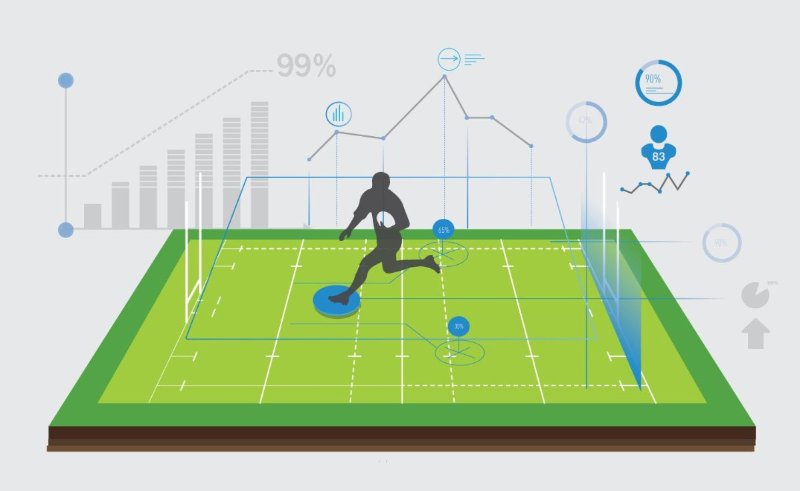In highly competitive team sports, one cannot stay ahead of others by being strong and having a plan. Today, teams have changed their way of preparing, playing, and enhancing through monitoring equipment and technologies for analyzing data. Such cutting-edge technologies provide helpful information to improve group work capacity, ensure better athlete performance, and help teams gain an advantage. But what are the mechanics behind these devices, and how do they affect team sports?
Understanding Tracking Technologies
Tracking technologies have become indispensable in modern sports. Coaches and analysts can monitor players’ movements, speed, and positioning in real time using devices like GPS trackers, wearable sensors, and video analysis tools. For instance, igaming software development by Altenar, a leader in sports technology, offers advanced tracking systems that help their fans gather critical data during matches. This data provides a comprehensive overview of each player’s performance, highlighting strengths and best areas.
Enhancing Player Performance
One of the significant benefits of tracking technologies is the enhancement of individual player performance. This improvement is achieved by allowing coaches to develop specific training schedules tailored to each player based on data gathered from wearables and GPS trackers. For example, a training program to improve stamina can be introduced to a player who consistently experiences fatigue during critical parts of the game. This precise customization ensures that every athlete trains efficiently, targeting their weaknesses while building on their strengths. Furthermore, through video analysis, athletes can scrutinize their movements and make necessary adjustments to prevent injuries from potentially dangerous lapses. This proactive approach helps refine techniques and maintain overall player health, leading to more consistent and high-level performances throughout the season.
Optimizing Team Strategy
In addition to enhancing individual achievements, tracking and analysis technologies are essential in refining team strategies. Coaches can identify effective plays and strategies by analyzing successful teams’ data patterns and game footage. This comprehensive analysis helps them develop tactics that capitalize on opponents’ weaknesses while enhancing their team’s strengths. Furthermore, real-time statistics provided to coaches during games allow informed decision-making about substitutions and tactical adjustments. These immediate insights can significantly impact the game’s outcome, as timely and strategic changes can shift the momentum in favor of their team. By leveraging these technologies, teams can ensure they are always one step ahead, prepared to adapt and respond to the dynamic nature of competitive sports
Injury Prevention and Management
Sports inevitably lead to injuries, but these can be reduced in terms of frequency and severity using some monitoring technologies. The players’ physical condition is continuously monitored by portable sensors, which provide crucial information about any impending injury. For example, if an athlete is moving and seems to be putting too much pressure on one part of their body, such as muscles around joints, they may take preventive measures before severe actual harm occurs. On top of that, studying certain information after one has been hurt aids a lot in creating appropriate plans for rehab that will make an injured person get back into shape without any problems quickly.
Fan Engagement and Experience
Even though tracking technologies are mainly meant to improve team performance, they go a long way in enhancing fan interaction and experience. Live broadcasts and sports apps can now be integrated with live statistics feeds and accurate time information, ultimately transforming how fans consume sports. Today’s viewers do not just watch as fans but participate in the game. Providing additional information makes the viewing experience better because it is interactive and captivating at the same time. Fans can follow their favorite player’s stats, track team performance, and predict outcomes, making their experience more dynamic and immersive. On top of that, such interactive features as live polls, heat maps, and player comparisons allow fans to get more engaged in the content on a more profound level than usual.
Conclusion
Incorporating monitoring and evaluation technology in group games is a massive step in improving how they are played and experienced. These technologies enhance player performance, optimize team strategies, and improve injury prevention and fan engagement. As sports evolve, embracing these innovations will be crucial for teams aiming to stay competitive and efficient. The future of team sports lies in the effective use of data, and those who leverage it wisely will undoubtedly lead the way.
In brief, tracking and analysis technologies have changed team sports, and they now have many pros that make them more effective. It does not matter whether you are fine-tuning some tactics as a coach, aiming to get better as a player, or just another fan trying to have a closer link with the game because the sports sector witnesses the impact of such emerging issues daily. So what is next for sports engineers? We can only speculate, but all signs show continued success in this area!






